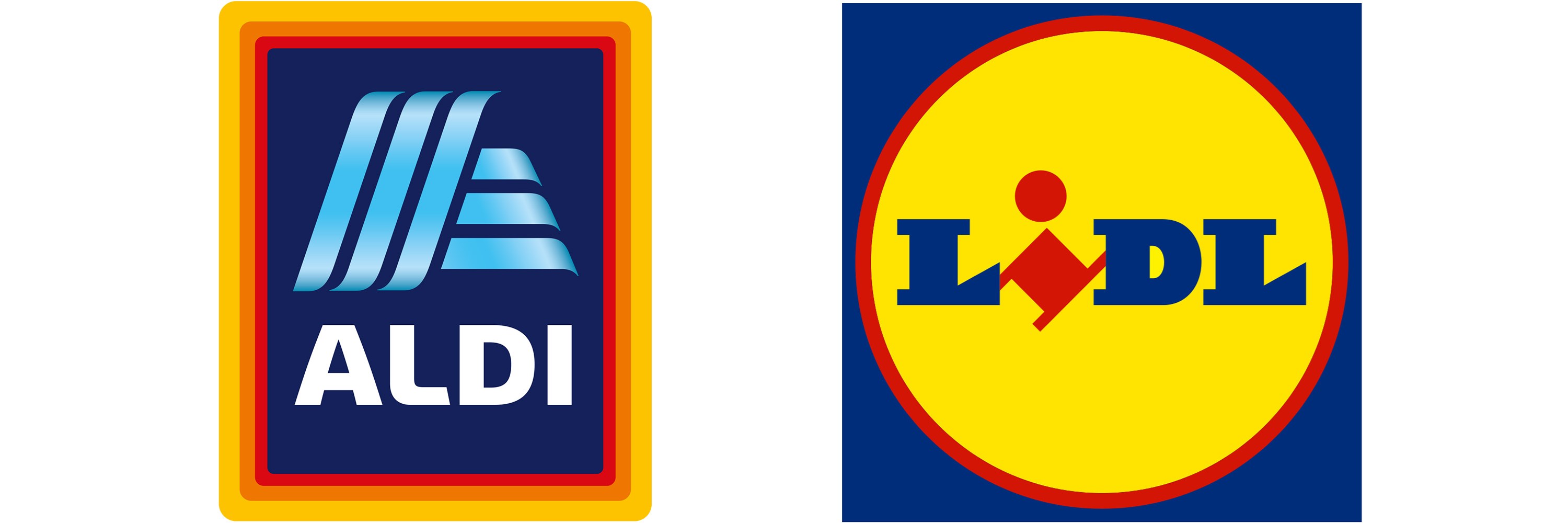
Aldi and Lidl take the lead
2019 was the year when Aldi passed Europe’s big box flagships, Carrefour and Tesco, taking the second place in the European Grocery Retail Ranking, only behind its rival, Schwarz Group (Lidl and Kaufland).
Remarkably, the latter’s discount division Lidl alone would still lead the pack even if the Kaufland full-range division was excluded from the ranking.
Four out of the six Top Players in Europe have significant sales contributions from discount stores.
And that’s not all. Europe is set to consolidate further, with the Top 30 reaching 61% market share in 2022, compared with 59% in 2016, LZ Retailytics, a German consultancy, predicts
Unlimited growth possibilities – but get the quality right
The discounters’ growth potential is still virtually unlimited. Even if some markets show signs of discount saturation, there is plenty of room for growth, from the UK to Romania, LZ Retailytics argues.
This means bad news for brand suppliers, doesn’t it? Not at all: Part of the future growth stems from the re-adjustment of their discount concept. As they become more and more mainstream, they are adapting their ranges to a broader clientele.
This does not only include more SKU’s in total, but also an increasingly sophisticated offer of added-value items, sometimes even comprising what was thought to be a niche product. Whether or not the price fights keep going relentlessly, or – depending on the market – are abating, it is quality and uniqueness that count more than ever before.
This has opened the doors to innovative products, start-up ideas (even including financial support from the retailers) and differentiating specialties.
This involves a lot of trial and error, and a long learning curve – especially for Aldi. The discounter is amid a gigantic transformation process, opening not only to brands but also trends – trying to target especially the young. What is a routine job for the Carrefours and Tesco’s, is an exciting (and sometimes rocky) journey into the unknown for Aldi Nord and Aldi Süd
Easier to get listed – but stay sustainable
Hence, suppliers do have a greater chance than ever to get their products listed at the discounters, and since the latter serve as the trailblazers in large parts of grocery retail, at conventional supermarkets as well. These are also on the search for new products, especially from SMEs or regional suppliers, to bolster their authentic neighborhood appeal while their stores tend to get smaller.
While grocery e-commerce as a standalone hasn’t yet gained much momentum, offering additional products online could be a convenient way of creating customer loyalty.
Also, manufacturers and retailers will have to realize that even in the low-price arena, environmental efforts will only continue to gain in importance. There is a hard competition going on as to who is the most sustainable company out there, and the European market leader, Schwarz Group (Lidl and Kaufland) is probably more advanced in its ecological efforts than many would expect due to its discounting heritage.
From windmill to electric lorry
Since grocery retail is about consumption in the first place, finding ways to consume ethically and sustainably is a retailer’s or manufacturer’s very duty.
It is about reducing food waste, reducing packaging and making the supply chain more sustainable. Not only from farm to fork, but also from the tree to the cardboard box and from the windmill to the electric lorry: This will remain a task for decades to come, and it is going to become a key element of differentiation as well as a financial competitive advantage.
In addition to managing the waste cycle, Lidl and Kaufland are gradually expanding their own production capacities (Schwarz Produktion), driving verticalization not only in packaging but also in food. These attempts to reach partial self-sufficiency may be no good news to suppliers, of course.
That said, they exclusively include private label in a handful of categories, such as soft drinks, bakery, nuts, chocolates, ice cream and coffee. Developing innovations to create differentiation, identifying trends, using industry networks and platforms, and incorporating category know-how will still provide suppliers with benefits that make them particularly attractive for the big retail players out there, especially in lucrative niches.
In increasingly saturated food markets, it’s not the staples but the sophisticated product solutions that are of interest to consumers, and hence, to both traditional supermarkets and up-trading discount store operators seeking to excel.
Facts
- Consolidation is progressing: The Top 30 Grocers in Europe will contribute 61% of all grocery retail sales in 2022, compared with 59% in 2016, LZ Retailytics forecasts say.
- Having advanced to the number two position in Europe, range extension will provide Aldi and its discount colleagues with further potential for growth.
|
Top grocers in Europe 2019 |
|
|---|---|
| In sales (BN Euros) | |
| Schwarz Group | 120 |
| Aldi | 66 |
| Carrefour | 65 |
| Tesco | 61 |
| Rewe Group | 60 |
| Edeka | 59 |